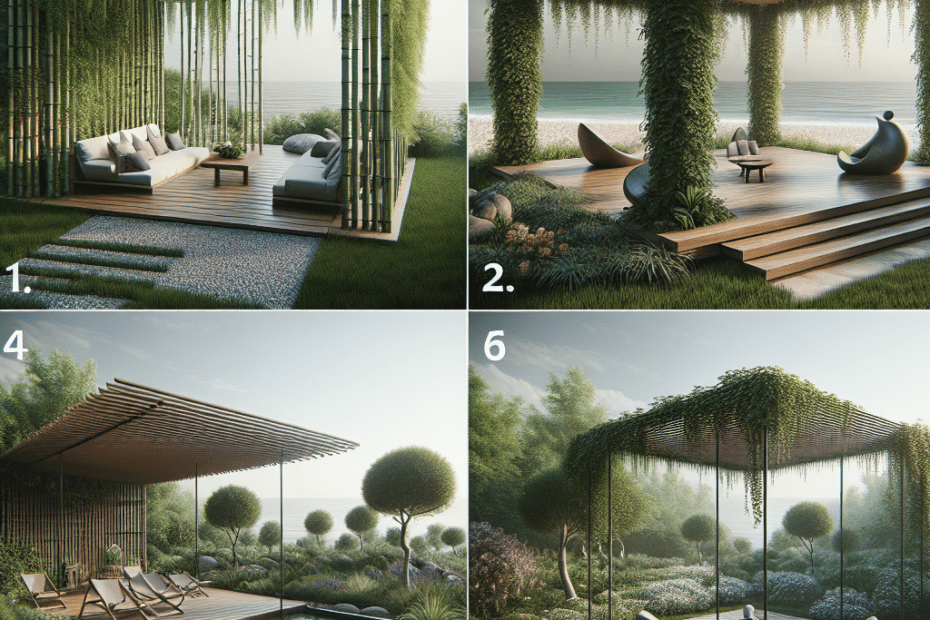“`html
Introduction
With the pace of life accelerating every day, many people feel the need to create their own outdoor meditation space to find tranquility and reconnect with nature. An outdoor meditation space can serve as a sanctuary for relaxation and mindfulness. According to the National Gardening Association, over 38% of Americans currently engage in gardening and improving outdoor areas, which aligns with a growing interest in outdoor wellness practices. By following these seven ways to create an outdoor meditation space, anyone can transform their backyard, patio, or even their balcony into a serene retreat.
1. Find the Right Location
Choosing the perfect spot for an outdoor meditation space is crucial. They should look for a place in their yard or patio where they feel comfortable and at ease. The spot should have minimal distractions, be relatively quiet, and provide a sense of privacy. Using tall plants or curtains can help create a secluded area. It’s also important to consider the accessibility of the space, ensuring that it’s easy to reach for daily practice.
2. Consider the Elements
When designing an outdoor meditation space, they should take into account the natural elements like sunlight, wind, and greenery. A balance of sun and shade can make the space comfortable during different times of the day. Selecting plants and flowers that offer a soothing fragrance not only adds to the aesthetics but also enhances the sensory experience of meditation, helping create a calming atmosphere.
3. Incorporate Natural Materials
Using natural materials such as wood, bamboo, or stone can contribute to creating a harmonious environment. Whether they use a bamboo mat for seating or stones to delineate the meditation area’s boundary, natural materials provide texture and blend seamlessly with the outdoor surroundings. Additionally, these materials are often sustainable and durable, making them excellent choices for outdoor settings.
4. Add Comfortable Seating
Comfort is a key factor when establishing a space for meditation. There are various options for outdoor seating, including meditation cushions, mats, or a simple bench. The important thing is that the seating should support proper posture during meditation. According to a study by the GWI (Global Wellness Institute), spending time in a well-designed outdoor space can improve mental well-being, emphasizing the need for comfort in these areas.
5. Create a Sense of Tranquility with Water Features
Water features such as a small fountain, pond, or even a birdbath can add a peaceful soundscape that enhances the meditation experience. The gentle sound of flowing water is known to have calming effects on the nervous system, which can help people achieve a deeper state of meditation and relaxation. It’s like bringing a piece of nature’s serenity into their space.
6. Personalize with Meaningful Decor
Adding personal touches, such as statues, wind chimes, or prayer flags, can give the outdoor meditation space a unique energy that reflects their personal beliefs and style. These elements can serve as focal points or symbols of their meditation practice, helping keep them grounded during sessions. The choice of decor should resonate with the user and complement the natural beauty of the outdoors.
7. Maintain the Space Regularly
To keep the meditation area inviting, it’s important to maintain the space regularly. This involves cleaning seating areas, pruning plants, and ensuring that any water features are functioning properly. A well-maintained space not only enhances the aesthetics but also makes them more inclined to use it frequently.
Table: Essential Elements for an Outdoor Meditation Space
| Element | Description |
|---|---|
| Location | Choose a quiet, comfortable, and accessible spot. |
| Natural Elements | Include sun, shade, and fragrant plants. |
| Materials | Use natural materials like wood, bamboo, and stone. |
| Seating | Opt for comfortable seating that supports posture. |
| Water Features | Add fountains or ponds for calming sounds. |
| Decor | Include personal and meaningful decorations. |
| Maintenance | Regularly maintain the area to keep it inviting. |
Key Takeaways
- Choosing the right location is crucial for creating a serene outdoor meditation space.
- Natural elements and materials enhance the environment’s calming effect.
- Comfortable seating aids in maintaining a correct meditation posture.
- Water features and decor personalize and enrich the meditation experience.
- Regular maintenance ensures the space remains an inviting sanctuary.
FAQ
- What is the best location for an outdoor meditation space?
The best location is a tranquil and private area in your yard or patio where you feel comfortable and have minimal distractions.
- How do natural materials contribute to the meditation space?
Natural materials, like wood and stone, blend with the surroundings and provide a sustainable and durable choice for outdoor settings.
- Why is seating important in a meditation space?
Comfortable seating supports proper posture, which is essential for maintaining long meditation sessions without discomfort.
- How do water features enhance meditation experiences?
The gentle sound of water can calm the nervous system and help individuals reach a deeper meditative state.
- What role does decor play in a meditation space?
Decor adds a personal touch, and serves as focal points or symbols to enhance the meditation experience.
“`
